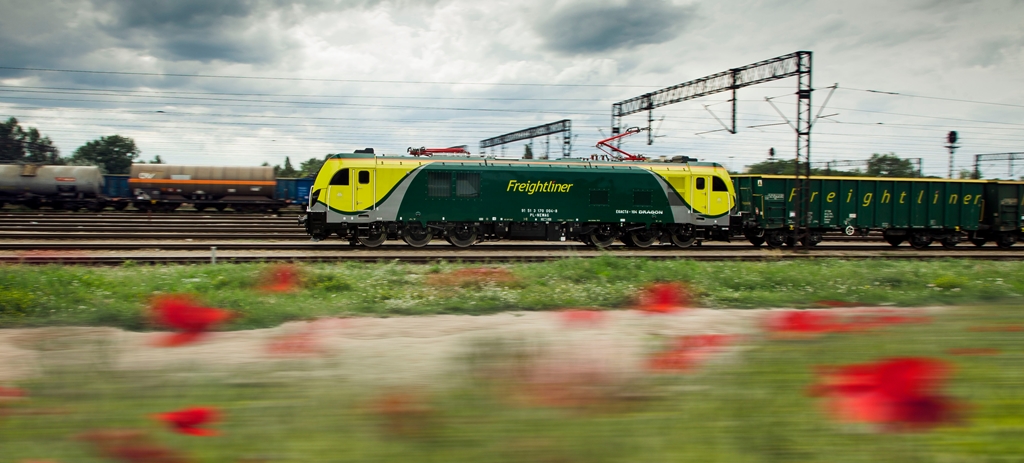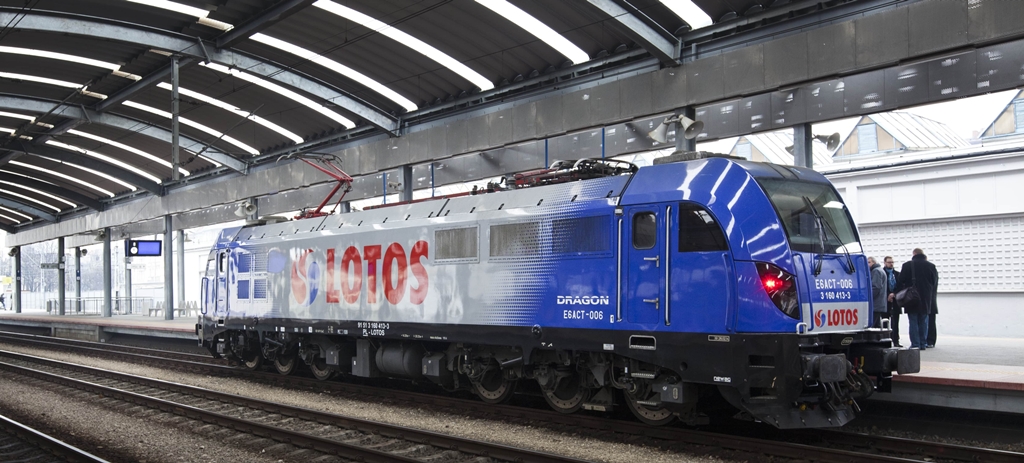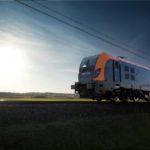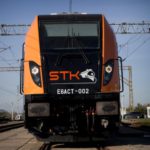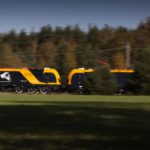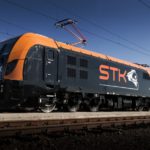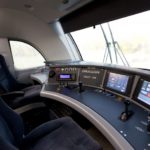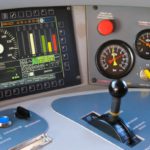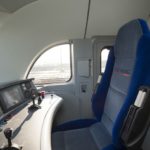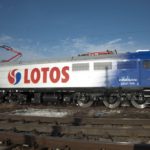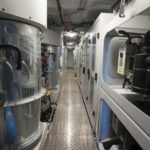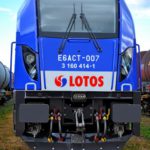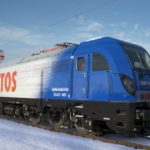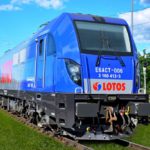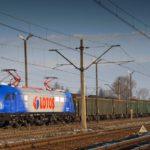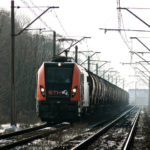The single-system DRAGON is the first traction vehicle of the six axle locomotives family, specially tailored for the Polish market. Dragon is a powerful, safe, attractively-priced and economical locomotive, fully-equipped and characterised by highly reliable operation.
DRAGON’s main advantage is a very high tractive force of the value of 374 kN which, in connection with the locomotive weight of 119 t, a modern anti-skid system and an individual drive per each axle, allows it to drive freight trains of the weight up to 4500t. The axle load below 20t combined with a specially designed suspension result in the fact that DRAGON is perfectly adapted to difficult operating conditions and proves to work effectively on Polish railway tracks.
The loco’s drive is made up of asynchronous traction motors driven by IGTB-based traction inverters. The locomotive has a modular construction which allows for tailoring technical parameters to individual clients’ needs e.g., increasing the maximum tractive effort to 450 kN (MAX LOAD option), adapting the locomotive to 25kV Ac voltage or installing an additional Diesel engine (DUAL POWER option).
Locomotive design ensures driver’s safety and enhanced working conditions by providing ergonomical cab and control panel layout, a double function air conditioning system, as well as a system of cameras, a safety cage and an anti-climbing structure protecting train operators in the case of a collision.
Dragon is equipped with a micro-processor system of control, allowing to adapt the loco’s operating mode to changing conditions, an on-board diagnostics system with full visual information and a data registration module which facilitates locating or predicting possible damages as well as with an anti-skid system.
The implemented production system and the high quality standards of Newag Gliwice S.A. (former ZNLE), confirmed by such certificates as e.g., International Railway Industry Standard IRIS (manufacturing, design, development and maintenance activity for the locomotives) and PN-EN ISO 9001:2009 guarantee the highest European quality of DRAGON locomotive.
![]() Basic features of the locomotive:
Basic features of the locomotive:
- Technical parameters tailored to user’s needs;
- Capable of pulling heavy freight trains of the weight up to 4500t;
- Capable of pulling trains on lower class tracks;
- Asynchronous drive;
- On-board diagnostic system with visual access and data recording module;
- Power supply using IGBT-based converters;
- Intelligent power management system;
- High technical availability ratio;
- Ready for ERTMS and GSM-R equipment;
- The highest available safety level;
- Enhanced driver’s working conditions;
- The camera system;
- Full amenities;
- Environmentally-friendly;
- Attractively priced;
- Ergonomic.
![]() Bogies:
Bogies:
- Two three-axle bogies in the Co’Co ’ configuration with individual drive per each axis;
- Welded hollow-girder frame construction;
- Transmission of traction force through pin and draft bar attached to the frame.
![]() Powertrain:
Powertrain:
- Monoblock wheels with a nominal diameter of 1250 mm;
- Braking discs fixed on both sides of the wheel;
- Asynchronous traction motors with power of 834 kW each;
- Spur gear;
- Axle bearing with conical roller bearings, temperature and speed sensors.
![]() Suspension:
Suspension:
- Primary level: two sets of coil springs mounted directly on both sides of the wheelset axle box;
- Secondary level: a set of large-scale, flexicoil spiral springs;
- Hydraulic shock absorbers for muffling vibrations.
![]() Locomotive body:
Locomotive body:
- Integral welded design;
- Crumple zones;
- Safety cage in driver’s cab;
- Anti-climbing system;
- Modular structure;
- Roof divided into three sections offering easy access to the machinery compartment;
- Ergonomic, two-person loco cab;
- Double function air-conditioning system;
- Four cameras acting as rear view mirrors;
- Two cameras showing the image of draw-bars and screw couplings;
- Modern fire detection and extinguishing system;
- Optional installation of a closed-system toilet.
![]() High voltage electrical circuits:
High voltage electrical circuits:
- Two or four single-arm pantographs with independent ADD system;
- Highly reliable high-speed UR26 circuit breaker by Secheron;
- Two blocks of power supply to the drive, each equipped with two AC/DC converters;
- Individual lubricant cooling system for each of the supply blocks.
![]() Low-voltage electrical circuits:
Low-voltage electrical circuits:
- All traction converter blocks fitted with the auxiliary circuit power module. One module used during loco’s operation, another– spare;
- 3x400V output voltage powering the auxiliary circuits;
- 110V constant voltage obtained from an additional battery charger powered with 3×440 V.
- 24V voltage generated by high-class DC/DC converters;
- Top-class 100Ah FNC battery system.
![]() Locomotive diagnostic and control:
Locomotive diagnostic and control:
- Microprocessor-based control system;
- Main loco controller;
- Two independent panels to display drive parameters and diagnostics in each cab;
- Event recorder synchronized to the electronic speedometer;
- Ready for GPS-based equipment showing diagnostic data.
- Overall control of locomotive operation;
- Setting the tractive effort;
- Fully automatic drive control with speed set by loco driver;
- Verification of loco driver’s orders entered by man-machine interface panel;
- Starting and braking process controlled by anti-slip system ;
- Control of the pneumatic system;
- Full locomotive diagnostics with the event recording.


